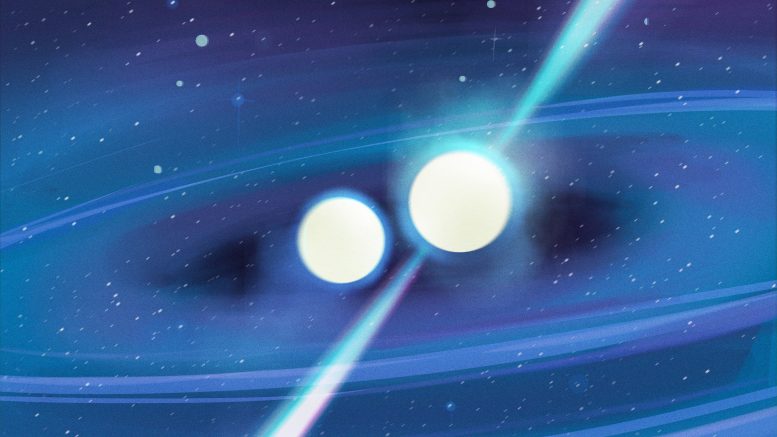
An important breakthrough in how we can understand dead star collisions and the expansion of the Universe has been made by an international team, led by the University of East Anglia. They have discovered an unusual pulsar – one of deep space’s magnetized spinning neutron-star ‘lighthouses’ that emits highly focused radio waves from its magnetic poles. The newly discovered pulsar (known as PSR J1913+1102) is part of a binary system – which means that it is locked in a fiercely tight orbit with another neutron star. Neutron stars are the dead stellar remnants of a supernova. They are made up of the most dense matter known – packing hundreds of thousands of times the Earth’s mass into a sphere the size of a city. In around half a billion years the two neutron stars will collide, releasing astonishing amounts of energy in the form of gravitational waves and light. But the newly discovered pulsar is unusual because the masses of its two neutron stars are quite different – with one far larger than the other. This asymmetric system gives scientists confidence that double neutron star mergers will provide vital clues about unsolved mysteries in astrophysics – including a more accurate determination of the expansion rate of the Universe, known as the Hubble constant. The discovery, published in the journal Nature, was made using the Arecibo radio telescope in Puerto Rico. Credit: Courtesy of Arecibo Observatory/University of Central Florida – William Gonzalez and Andy Torres.
An important breakthrough in how we can understand dead star collisions and the expansion of the Universe has been made by an international team, led by the University of East Anglia.
They have discovered an unusual pulsar — one of deep space’s magnetized spinning neutron-star ‘lighthouses’ that emits highly focused radio waves from its magnetic poles.
The newly discovered pulsar (known as PSR J1913+1102) is part of a binary system — which means that it is locked in a fiercely tight orbit with another neutron star.
“The event caused gravitational-wave ripples through the fabric of space time, as predicted by Albert Einstein over a century ago.”
Neutron stars are the dead stellar remnants of a supernova. They are made up of the most dense matter known — packing hundreds of thousands of times the Earth’s mass into a sphere the size of a city.
In around half a billion years the two neutron stars will collide, releasing astonishing amounts of energy in the form of gravitational waves and light.
But the newly discovered pulsar is unusual because the masses of its two neutron stars are quite different — with one far larger than the other.
This asymmetric system gives scientists confidence that double neutron star mergers will provide vital clues about unsolved mysteries in astrophysics — including a more accurate determination of the expansion rate of the Universe, known as the Hubble constant.
The discovery, published today (July 8, 2020) in the journal Nature, was made using the Arecibo radio telescope in Puerto Rico.
Lead researcher Dr. Robert Ferdman, from UEA’s School of Physics, said: “Back in 2017, scientists at the Laser Interferometer Gravitational-Wave Observatory (LIGO) first detected the merger of two neutron stars. The event caused gravitational-wave ripples through the fabric of space time, as predicted by Albert Einstein over a century ago.”
Known as GW170817, this spectacular event was also seen with traditional telescopes at observatories around the world, which identified its location in a distant galaxy, 130 million light-years from our own Milky Way.
Dr. Ferdman said: “It confirmed that the phenomenon of short gamma-ray bursts was due to the merger of two neutron stars. And these are now thought to be the factories that produce most of the heaviest elements in the Universe, such as gold.”
The power released during the fraction of a second when two neutron stars merge is enormous — estimated to be tens of times larger than all stars in the Universe combined.
“This matter is still a major mystery — it’s so dense that scientists still don’t know what it is actually made of. These densities are far beyond what we can reproduce in Earth-based laboratories.”
So the GW170817 event was not surprising. But the enormous amount of matter ejected from the merger and its brightness was an unexpected mystery.
Dr. Ferdman said: “Most theories about this event assumed that neutron stars locked in binary systems are very similar in mass.
“Our new discovery changes these assumptions. We have uncovered a binary system containing two neutron stars with very different masses.
“These stars will collide and merge in around 470 million years, which seems like a long time, but it is only a small fraction of the age of the Universe.
“Because one neutron star is significantly larger, its gravitational influence will distort the shape of its companion star — stripping away large amounts of matter just before they actually merge, and potentially disrupting it altogether.
“This ‘tidal disruption’ ejects a larger amount of hot material than expected for equal-mass binary systems, resulting in a more powerful emission.
“Although GW170817 can be explained by other theories, we can confirm that a parent system of neutron stars with significantly different masses, similar to the PSR J1913+1102 system, is a very plausible explanation.
“Perhaps more importantly, the discovery highlights that there are many more of these systems out there — making up more than one in 10 merging double neutron star binaries.”
Co-author Dr. Paulo Freire from the Max Planck Institute for Radio Astronomy in Bonn, Germany, said: “Such a disruption would allow astrophysicists to gain important new clues about the exotic matter that makes up the interiors of these extreme, dense objects.
“This matter is still a major mystery — it’s so dense that scientists still don’t know what it is actually made of. These densities are far beyond what we can reproduce in Earth-based laboratories.”
The disruption of the lighter neutron star would also enhance the brightness of the material ejected by the merger. This means that along with gravitational-wave detectors such as the US-based LIGO and the Europe-based Virgo detector, scientists will also be able to observe them with conventional telescopes.
Dr. Ferdman said: “Excitingly, this may also allow for a completely independent measurement of the Hubble constant — the rate at which the Universe is expanding. The two main methods for doing this are currently at odds with each other, so this is a crucial way to break the deadlock and understand in more detail how the Universe evolved.”
Reference: “Asymmetric mass ratios for bright double neutron-star mergers” by R. D. Ferdman, P. C. C. Freire, B. B. P. Perera, N. Pol, F. Camilo, S. Chatterjee, J. M. Cordes, F. Crawford, J. W. T. Hessels, V. M. Kaspi, M. A. McLaughlin, E. Parent, I. H. Stairs and J. van Leeuwen, 8 July 2020, Nature.
DOI: 10.1038/s41586-020-2439-x
The research was led by UEA in collaboration with scientists at Max Planck Institute for Radio Astronomy in Bonn, the Arecibo Observatory in Puerto Rico, Columbia University, Cornell University, Franklin and Marshall College, the University of Amsterdam, McGill University, West Virginia University, the University of British Columbia, the South African Radio Astronomy Observatory and the Netherlands Institute for Radio Astronomy (ASTRON).
‘Asymmetric mass ratios for bright double neutron-star mergers’ is published in the journal Nature on July 8, 2020.

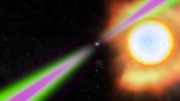
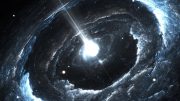
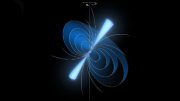
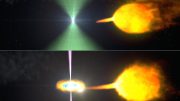
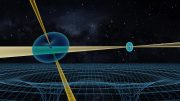
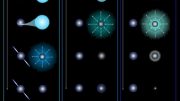
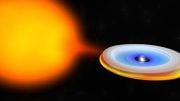
one more mystery in the kosmology .
the solution is perhaps in ” the dark expansion theory ”
https://www.youtube.com/watch?v=iaVmoWacjBM
You have self promoted that pseudoscience here before. Maybe you should try something more productive?
The one stand alone theory about the universe and how it expands is not even on the thought of man as the most viable of all! The universe is shaped in a spiral. If the proper devices are installed on the Kepler space telescope, it will allow the shape of the universe to be visible by bending the light. That will explain the multiple universes theory. Good luck gentlemen, just remember where you heard it from first! Paul Dell Chadwick.
No, and you don’t even try to give support to that. Observations tell us the universe is perfectly flat space, homogeneous and isotropic on large scales [ https://en.wikipedia.org/wiki/Shape_of_the_universe ].
The Hubble Constant has already been debunked. It doesn’t exist and there’s no other test that will bring it back. It is, in the words of John Cleese, “A dead parrot”. This Constant is no more.
Trolling that an observation that has been made for over a century is ‘debunked’ [how?] does not make a fact suddenly disappear [ https://en.wikipedia.org/wiki/Expansion_of_the_universe ].
If there is a parrot here, it is you [ https://scitechdaily.com/discovery-of-massive-galaxy-just-1-5-billion-years-after-the-big-bang-has-astronomers-questioning-formation-models/#comment-516800 ].
Something that has been observed for over a century [ https://en.wikipedia.org/wiki/Expansion_of_the_universe ] cannot be made to suddenly disappear by anyone’s unreferenced claim of ‘debunking’.
If there is a parrot here it is you – you have trolled similar inanities before.
Universe
The universe has been expanding ever since the Big Bang.
Astronomers just confirmed the existence of “Dark Energy”, a mysterious repulsive force that acts in opposite to gravity. As the distance increases,
[Quran 51.47] And the heaven, We built it with craftsmanship and We are still expanding.
How could an illiterate man who lived 1400 years have known about the expansion of the universe?
(The Bible says that the sky is “hard as a mirror of cast bronze” Job 37:18. So the Bible insists on a static universe. Actually Albert Einstein’s famous blunder, the cosmological constant, was to explain the static universe. Although at that time no scientific evidence existed to support that claim, Einstein gave the Bible the benefit of the doubt and went for a static universe, non-expanding non-contracting. Later, when Edwin Hubble discovered the expansion of the universe, Einstein retracted this cosmological constant and called it the biggest blunder of his career. By trusting the Bible Einstein got it wrong by the order of 10120).
Superstition is not relevant for what we see in nature.
“So the GW170817 event was not surprising. But the enormous amount of matter ejected from the merger and its brightness was an unexpected mystery.”
The earlier explanation for the merger observation – an oblique jet – may not have explained all that, but I hope it did. The proposed rate for multimessenger binary neutron star mergers is yet another magnitude from the expected rate, and the latter rate would still have us waiting 5-10 years for a more precise independent expansion rate measurement.
Historically expansion rate estimates spread much more, but unlike early estimates of, say, light speed in vacuum the moren estimates has not jumped outside that range. Instead, with more precision there has been an unexpected spread as well as a diverging trend in the supernova observations [ https://sci.esa.int/web/planck/-/60504-measurements-of-the-hubble-constant ].
The outcome can have several consequences, but the most interesting is perhaps if the expansion rates comes out much higher than 70 km s^-1 Mpc^-1 since that could mean new physics is needed.
But it has long looked like observation problems and the recent best data sets concur.
1. The highest precision data set starts out at 70+ km s^-1 Mpc^-1 for low-z observations, but adding in high-z converges on the median 70 km s^-1 Mpc^-1 value.
“We see tentative evidence that data from relatively nearby voids and BAO favor the high Hubble rate seen from other low-redshift methods, but including data from more distant quasar absorption lines brings it in better agreement with the value inferred from Planck CMB data.”
[ https://scitechdaily.com/most-precise-tests-of-dark-energy-and-cosmic-expansion-yet-confirm-the-model-of-a-spatially-flat-universe/ ; https://journals.aps.org/prl/abstract/10.1103/PhysRevLett.124.221301 ].
2. We now know the expansion rate tension can equally well be modeled as a CMB temperature tension, indicating the problem may lie elsewhere.
“… the analysis showed that the solution to the Hubble tension might not be a change in the cosmological standard model, but rather a careful examination of the assumptions and priors that influence the measurement of H0.”
[ https://astrobites.org/2020/06/27/h0-or-t0-tension/ ; https://arxiv.org/abs/2005.10656 ].
Moreover, the CMB (with temperature ealone, as well as the agreeing CMB and BAO observations, converge on the median 70 km s^-1 Mpc^-1 value.
So what about the binary neutron star merger observations? Well, the first observation gave a familiar value, the median 70 km s^-1 Mpc^-1 value [ https://sci.esa.int/web/planck/-/60504-measurements-of-the-hubble-constant ; https://arxiv.org/abs/1710.05835 ].